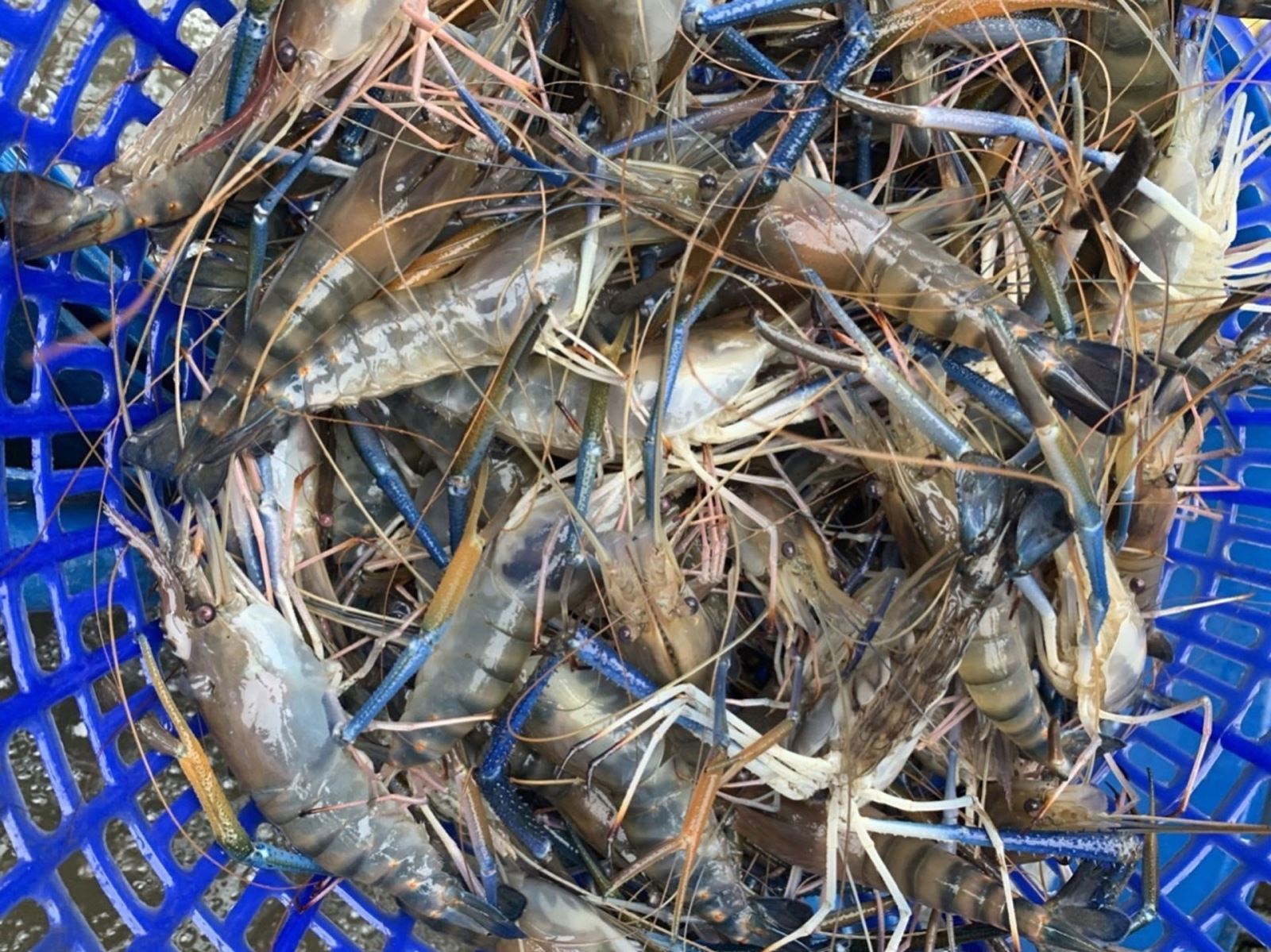Since the beginning of 2025, the prices of black tiger shrimp, white-leg shrimp, giant freshwater prawns, and mud crabs in An Giang have remained relatively high. In particular, over the past month, the prices of these aquatic products have continued to rise, helping increase farmers’ incomes and contributing to the stable development of the province’s aquaculture sector.

As one of the households with many years of experience in integrated farming of black tiger shrimp, white-leg shrimp, and giant freshwater prawns in Vinh Binh commune, Mrs. Trang Thi Tu Nga shared that her family operates on an area of 3 hectares. Since the beginning of 2025, her family has harvested twice, earning more than 300 million VND in revenue and over 130 million VND in profit. The profit from these two shrimp crops is over 30 million VND higher than the same period in 2024, thanks to higher selling prices compared to last year.
Specifically, type 1 black tiger shrimp (20 shrimp/kg) is priced at 230,000 VND/kg, while type 2 black tiger shrimp (30 shrimp/kg) costs 200,000 VND/kg. White-leg shrimp fetch similar prices, up by more than 20,000 VND/kg compared to 2023 and 2024. Particularly, since mid-July 2025, the purchase price of giant freshwater prawns has risen by 30,000–50,000 VND/kg. Live prawns aerated with oxygen for transport sell for 150,000–160,000 VND/kg, while stressed prawns fetch 90,000 VND/kg.
“My family practices improved extensive farming combined with limited use of industrial feed. We stock prawns sequentially, first nursing the juveniles in nursery ponds before transferring them to the main ponds, so we can harvest three crops a year. In the past two harvests alone, we sold over 400 kg of black tiger and white-leg shrimp, and more than 1.7 tons of giant freshwater prawns. The output is similar to previous years, but thanks to higher selling prices, our profit increased. Not only my family but also most shrimp farmers in the area are very pleased,” Mrs. Nga said.
The rice–shrimp integrated model under biosecurity practices has been widely adopted by farmers in An Giang’s Thứ region over the past five years. It has been evaluated by both the agriculture sector and farmers as an effective and sustainable model. Mr. Le Thanh Hai from Dong Hoa commune shared that his family farms 3 hectares with a system of one rice crop and two shrimp crops intercropped with mud crabs, applying biosecure aquaculture methods: selecting seedstock through quarantine, avoiding chemicals, feeding shrimp with snails and rice, and supplementing only small amounts of industrial feed. For rice production, he uses organic fertilizers and minimizes chemical pesticides to meet rice export standards.
“Since the beginning of the year, black tiger shrimp, white-leg shrimp, and mud crabs have all maintained relatively high prices, 30,000–50,000 VND/kg higher than in previous years, benefiting farmers with better incomes and profits. For my family alone, from 3 hectares of shrimp and crab farming, we earned around 280 million VND, with a profit of about 150 million VND after expenses. Currently, we are preparing the ponds for rice cultivation while also nursing shrimp fry for the next rice-shrimp crop,” Mr. Hai added.
According to Mr. Phu Vinh Thai, Deputy Head of the An Giang Provincial Fisheries Sub-Department – Fisheries Surveillance, in the first eight months of 2025, the province’s aquaculture output reached more than 820,000 tons, equivalent to 72% of the annual plan. Aquaculture activities in the province have remained stable since the beginning of the year, with few disease outbreaks. Regarding brackish-water shrimp farming, the province has been implementing diverse farming models tailored to ecological zones and climate change adaptation. Productivity is being improved through scientific and technological advances, along with cooperative production models aimed at sustainable development.
The province has been converting ineffective, saline-affected rice fields into suitable shrimp farming models; upgrading irrigation and transport infrastructure to support expansion and disease safety; and placing strong emphasis on environmental protection, especially in intensive and super-intensive farming.
To ensure sustainable aquaculture, An Giang is promoting local seed production and nurseries to gradually become self-sufficient and improve seed quality to meet farming demand. The province strictly manages aquatic seed trading points, controls the quality of imported seedstock, and encourages businesses to invest in freshwater, brackish, and marine seed production zones to supply quality breeds, especially high-value aquatic species.
At the same time, it is strengthening seed quarantine to ensure quality; proactively monitoring dangerous infectious diseases in farmed species; and promptly guiding farmers in disease prevention and treatment. The province also promotes the application of advanced, environmentally friendly aquaculture technologies that reduce waste under the circular economy model, Mr. Phu Vinh Thai emphasized.
Van Si (VNA)
